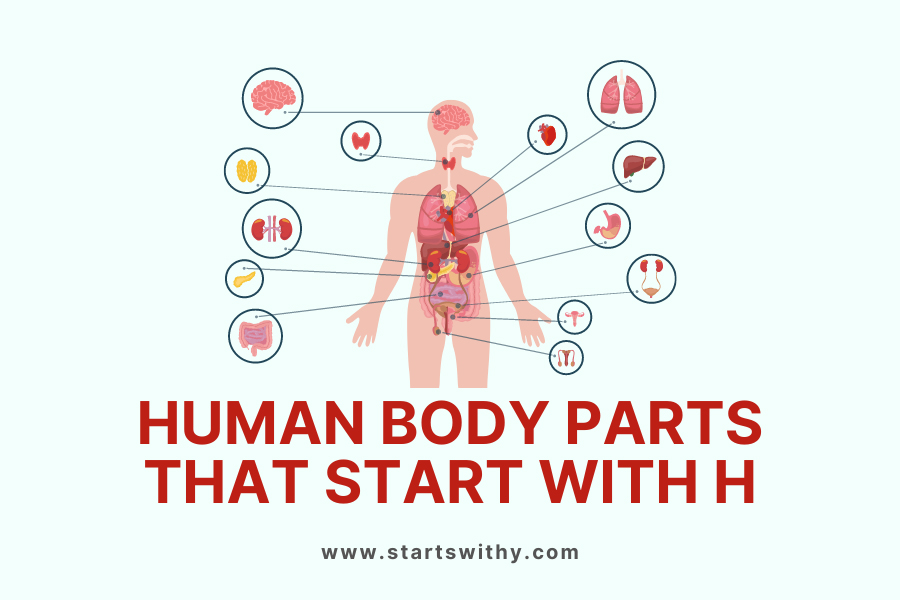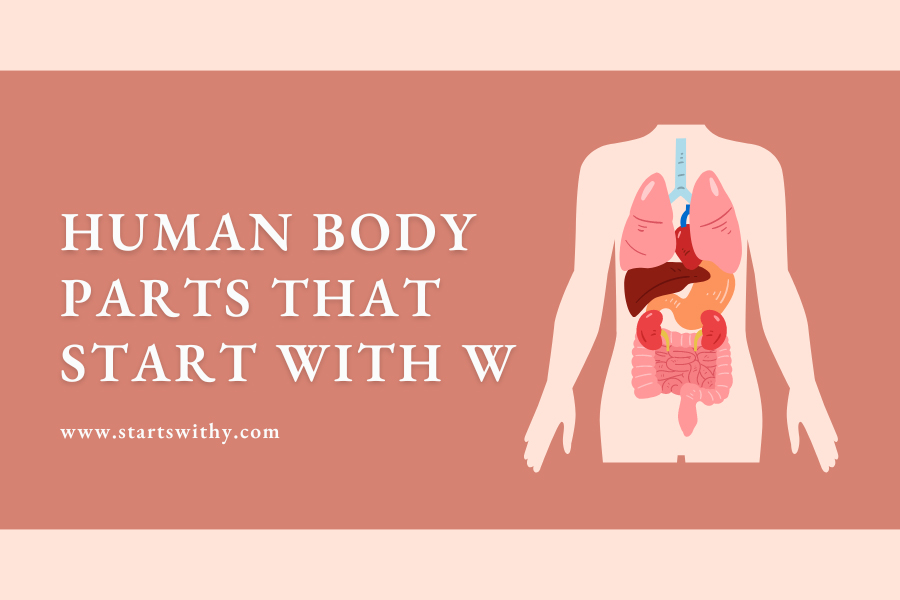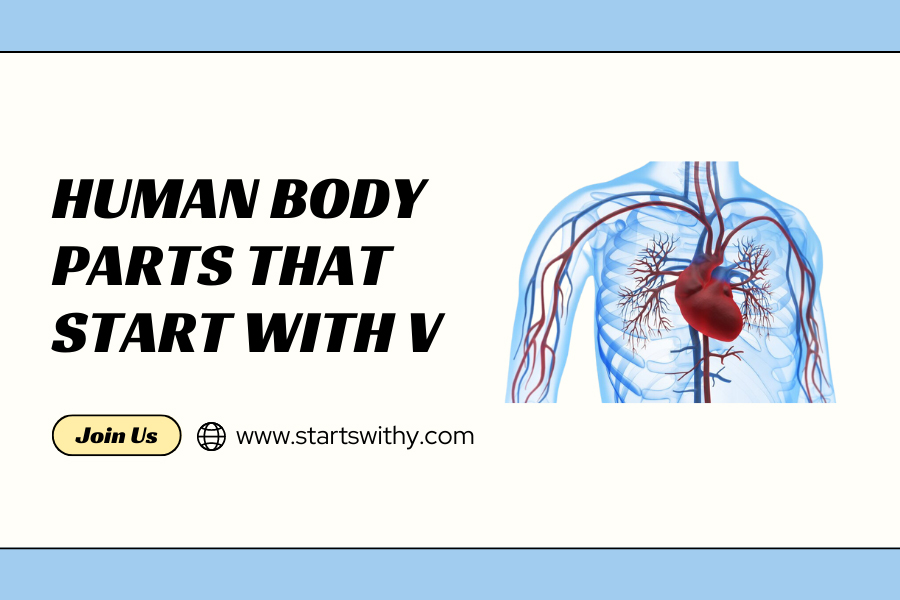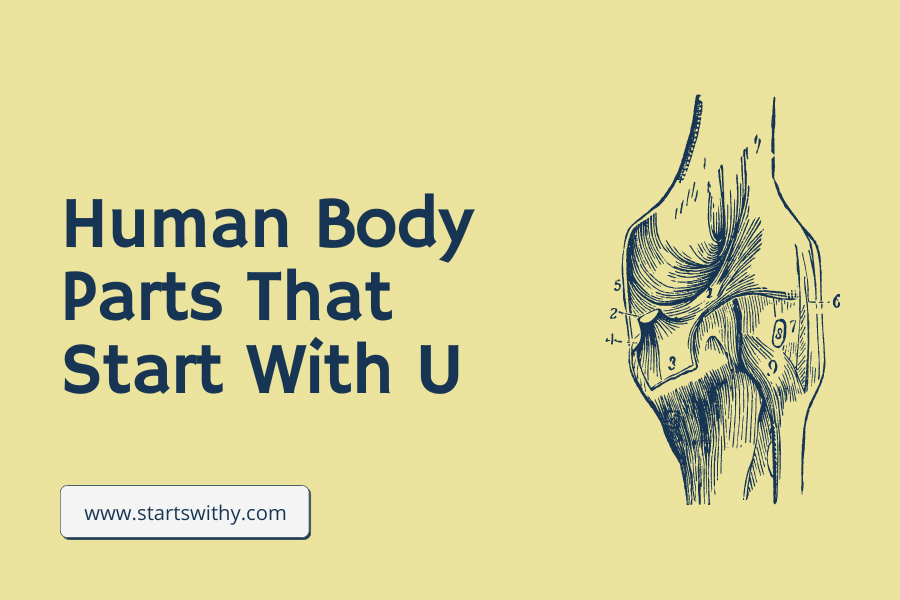Welcome to the next intriguing installment in our series exploring human anatomy, “Body Parts That Start With H”. This enlightening article focuses on the body parts beginning with the letter ‘H’, uncovering everything from the essential heart to the dynamic hip joint. We aim to provide in-depth knowledge about their functions, structure, and unique characteristics.
Ideal for students, teachers, or anyone keen on learning more about the human body, this piece continues our alphabetical exploration of the miraculous intricacy of our bodies. So, whether you’re a medical practitioner or a curious reader, prepare to deepen your understanding of our incredible biological design.
Human Body Parts That Start With The Letter H
The human body, a marvel of biological engineering, is composed of an intricate network of systems, organs, and structures, each fulfilling its unique role. As we journey through the alphabet to explore the human body, we arrive at the letter “H.” The ensuing sections will delve into these body parts that start with “H,” elucidating their structure, function, and the roles they play in our overall health.
Heart

The heart, undoubtedly one of the most vital organs in the human body, is a muscular organ roughly the size of a closed fist. Located slightly to the left of the chest, it works ceaselessly to pump blood throughout the body. The heart ensures oxygen and nutrients are delivered to all the body’s tissues while simultaneously removing waste products like carbon dioxide.
Hand

The hand is an incredibly complex and dexterous part of the human body, vital for numerous activities such as writing, typing, lifting, and throwing. Structurally, the hand comprises the wrist, palm, and fingers, housing a total of 27 bones. Its structure, coupled with muscular control, provides the flexibility and precision necessary for our diverse range of movements.
Hip

The hip is a robust ball-and-socket joint formed by the pelvic bone (acetabulum) and the femur’s head. This joint plays a crucial role in weight-bearing and locomotion, allowing movements such as flexion, extension, abduction, adduction, and rotation. The stability and range of motion provided by the hip joint are vital to everyday activities like walking, running, and jumping.
Hair

Hair is a protein filament that grows from follicles found in the dermis. Although hair might seem trivial, it serves several functions, including protection, regulation of body temperature, and facilitating the sense of touch. Moreover, hair on the scalp provides insulation from the cold and protection from the sun’s harmful rays.
Humerus
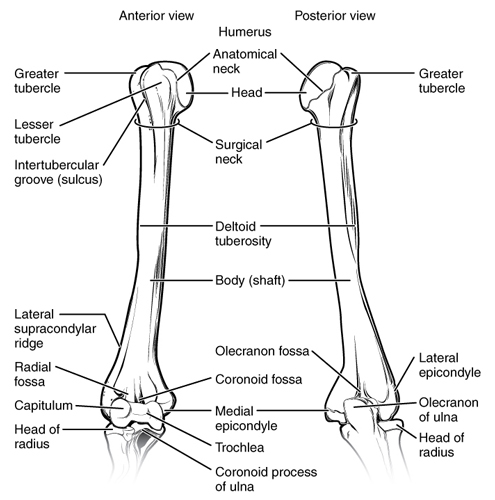
The humerus is the long bone in the upper arm or forelimb that runs from the shoulder to the elbow. It interacts with the shoulder blade to form the shoulder joint and with the lower arm bones (radius and ulna) to form the elbow joint. The humerus is instrumental in arm movement and the functioning of the upper limb.
Hypothalamus
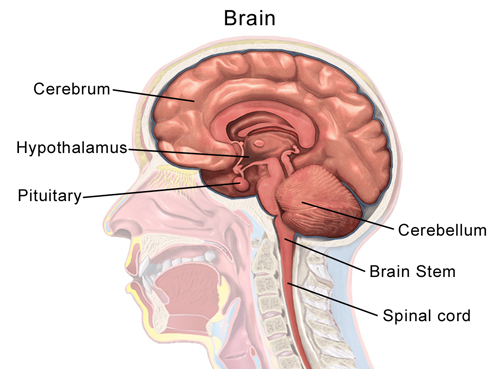
The hypothalamus is a small but crucial part of the brain that links the nervous system to the endocrine system via the pituitary gland. It is involved in many aspects of regulation, including body temperature, thirst, hunger, sleep, mood, and the circadian rhythm. The hypothalamus also controls the release of hormones and is integral to maintaining the body’s homeostasis.
Heel
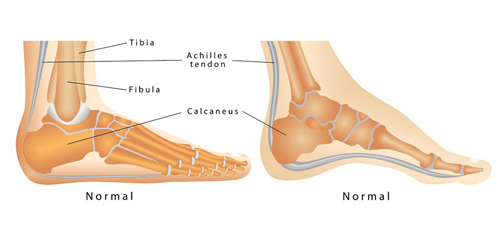
The heel is the prominence at the posterior end of the foot, providing support while standing and walking. It is where the largest bone in the foot, the calcaneus (heel bone), is located. The heel absorbs the first impact during walking or running, making it susceptible to injury and wear.
Hamulus: The Tiny Titan of Balance
Tucked deep within the inner ear lies a tiny, hook-shaped bone called the hamulus. Despite its small size, this unsung hero plays a vital role in balance and coordination.
- Balance Barometer: The hamulus, along with other structures in the inner ear, helps us maintain balance by detecting head movements and changes in body position. Tiny hair cells within the hamulus send signals to the brain about our orientation, allowing us to adjust our posture and movement accordingly.
- Connection Crew: The hamulus also serves as an attachment point for several key muscles and ligaments that stabilize the bones of the inner ear. This intricate network of connections ensures the delicate structures within the ear function smoothly.
- Protecting the Precious: Due to its location deep within the skull, the hamulus is naturally well-protected. However, certain infections or head injuries can affect its functionality, leading to balance problems and dizziness.
Hand Muscles: Masters of Manipulation
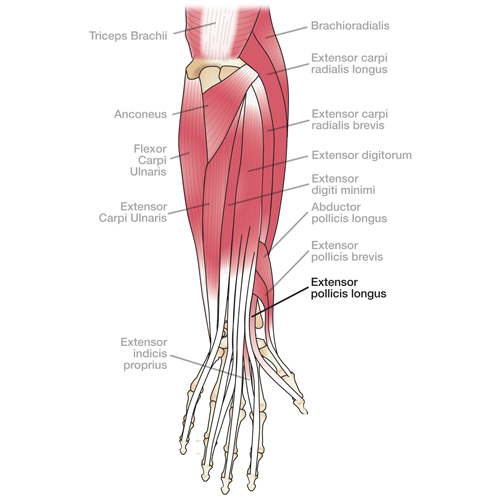
Imagine a symphony of muscles working together with exquisite precision – that’s the magic of the hand muscles. These incredible structures enable us to grasp, grip, pinch, and perform countless other intricate movements that define our daily lives.
- Muscle Mashup: The hand contains 27 different bones, 33 joints, and a multitude of muscles working in concert. Some key players include the flexor and extensor muscles that control finger movement, the intrinsic muscles that manipulate the thumbs, and the abductor and adductor muscles that move the hands away from and towards the body.
- Grip Force: The human hand can exert a surprisingly strong grip force, thanks to the powerful flexor muscles in the forearm and palm. This strength allows us to hold heavy objects, climb, and perform various manipulative tasks.
- Fingertip Feats: The delicate muscles and nerves in our fingertips give us exceptional tactile sensitivity. This allows us to distinguish between textures, temperatures, and shapes with remarkable precision, enhancing our interaction with the world around us.
Head: Command Center of the Body

Cradling our brain, housing our senses, and expressing our emotions – the head is the central hub of our being. This complex structure acts as a command center, integrating sensory information, coordinating movement, and shaping our perception of the world.
- Sensory Hub: The head houses our eyes, ears, nose, and mouth, providing us with sight, sound, smell, and taste. These sensory organs gather information from the environment and send it to the brain for processing and interpretation.
- Brainpower Central: The brain, nestled within the skull, is the body’s control center. It receives sensory information, processes it, and sends signals to muscles and organs to generate movement and responses. This intricate network allows us to think, learn, feel, and interact with the world around us.
- Expressive Powerhouse: The head plays a crucial role in nonverbal communication. Facial muscles enable us to express emotions like happiness, sadness, anger, and surprise, while head movements can signal agreement, disagreement, or curiosity.
Heart Valves: Guardians of the Flow
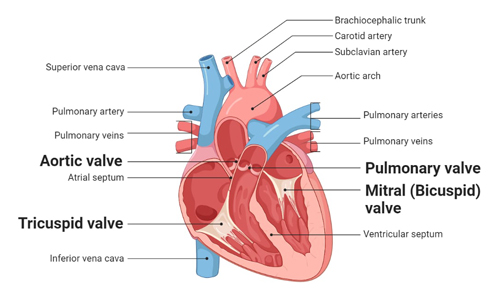
Imagine four tiny gates meticulously controlling the flow of blood within your heart – that’s the magic of the heart valves. These remarkable structures ensure blood travels in the right direction, maintaining proper pressure and optimizing heart function.
- Gatekeeping Quartet: The heart has four valves:
- Mitral Valve: Located between the left atrium and left ventricle, it controls blood flow from the atrium to the ventricle.
- Tricuspid Valve: Situated between the right atrium and right ventricle, it regulates blood flow from the atrium to the ventricle.
- Pulmonary Valve: Found at the exit of the right ventricle, it directs blood to the lungs for oxygenation.
- Aortic Valve: Positioned at the exit of the left ventricle, it sends oxygen-rich blood to the rest of the body.
- Flapless Flow: Unlike traditional gates, heart valves are made of thin, flexible flaps that open and close with each heartbeat. These flaps are anchored by chordae tendineae, delicate strings that connect them to the heart muscle.
- Valve Vigilance: Healthy valves open and close smoothly, ensuring proper blood flow. However, valve problems like stenosis (narrowing) or regurgitation (leaking) can disrupt the flow, leading to heart problems.
Hepatic Veins: The Liver’s Drainage Network
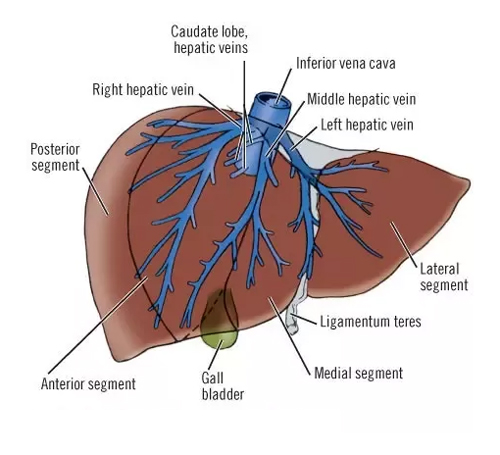
Nestled within the liver, a hidden network of veins plays a crucial role in detoxification and waste removal – the hepatic veins. These tiny vessels carry deoxygenated blood and filtered toxins away from the liver, ensuring its optimal functioning.
- Drainage Duo: The hepatic veins are divided into two main branches – the left and right hepatic veins. These branches then merge into the inferior vena cava, the largest vein in the body, which carries blood back to the heart.
- Cleanse and Circulate: The hepatic veins drain deoxygenated blood from the liver, which has been depleted of nutrients and filtered of toxins. This blood then travels back to the heart for oxygenation and recirculation.
- Liver Lifeline: Healthy hepatic veins are crucial for maintaining liver function. Blockages or narrowing of these veins can lead to liver congestion and serious health problems.
Hindfoot: The Unsung Hero of Mobility
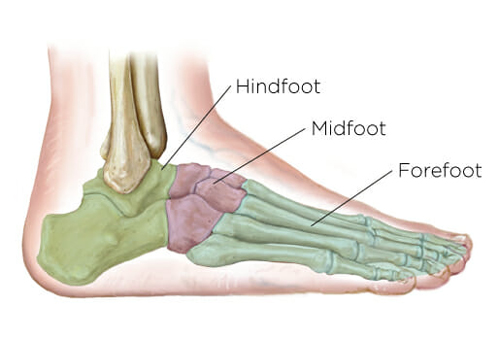
Often overshadowed by the ankle and toes, the hindfoot plays a vital role in stability, support, and movement. This complex structure, composed of several bones and joints, forms the foundation for our every step.
- Bone Brigade: The hindfoot consists of seven tarsal bones, including the talus and calcaneus, which connect the foot to the leg bones. These bones are arranged in a way that provides stability and shock absorption.
- Joint Junction: Three major joints connect the hindfoot to other parts of the foot:
- Talocalcaneal Joint: This joint allows the foot to move up and down, providing flexibility for walking and running.
- Subtalar Joint: This joint allows the foot to twist inward and outward, important for balance and agility.
- Ankle Joint: This joint connects the foot to the leg and allows for forward and backward movement.
- Hidden Champion: The hindfoot often faces stress and strain due to its weight-bearing role. Maintaining good posture, wearing supportive shoes, and stretching regularly can help prevent hindfoot problems and keep your feet feeling happy.
Hip Joint: The Flexible Powerhouse
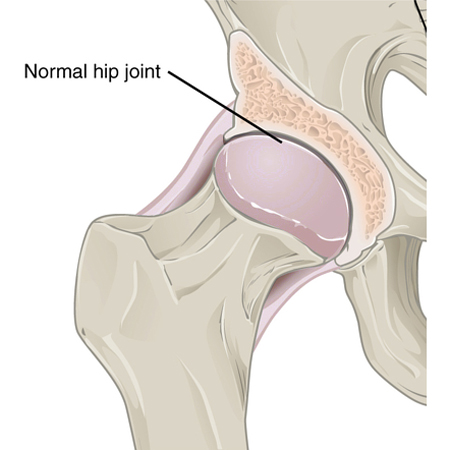
Imagine a smooth, ball-and-socket joint capable of supporting your weight, enabling graceful strides, and powering explosive jumps – that’s the magic of the hip joint. This incredible structure connects the legs to the torso, offering remarkable strength and flexibility.
- Bone Buddies: The hip joint is formed by the rounded head of the femur (thigh bone) nestled into the cup-shaped acetabulum of the pelvis. This secure socket is lined with cartilage for smooth movement and surrounded by strong ligaments for stability.
- Muscle Mashup: Over 20 muscles surround the hip joint, playing crucial roles in various movements. Key players include the gluteus maximus for extending the leg, the hamstrings for flexing it, and the adductors and abductors for moving the leg inward and outward, respectively.
- Keeping it Healthy: Maintaining good posture, stretching regularly, and engaging in strengthening exercises can help prevent hip pain and discomfort. Wearing supportive shoes and avoiding repetitive strain can also contribute to a healthy hip joint.
Human Skeleton: The Body’s Blueprint
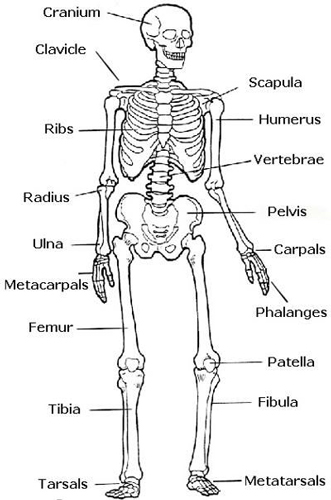
Beneath our skin and muscles lies a remarkable framework – the human skeleton. This intricate network of bones provides structure, support, and protection, serving as the body’s internal scaffolding.
- Building Blocks: The adult human skeleton consists of 206 bones, categorized into two main divisions:
- Axial Skeleton: Comprises 80 bones, including the skull, spine, ribs, and sternum. This framework protects vital organs and supports the body’s posture.
- Appendicular Skeleton: Includes 126 bones, forming the arms and legs. This division allows for movement and manipulation of the limbs.
- Joint Junctions: Bones are connected by joints, allowing for various types of movement. Hinge joints permit bending and straightening, like the elbows and knees. Ball-and-socket joints enable full rotational movement, like the hips and shoulders.
- Lifelong Wonder: The human skeleton undergoes continuous remodeling throughout life. Bones break down and rebuild, adapting to stress and maintaining their strength. Understanding the skeleton’s structure and function is crucial for appreciating the amazing machinery that supports our movements.
Hypophysis: The Master Gland
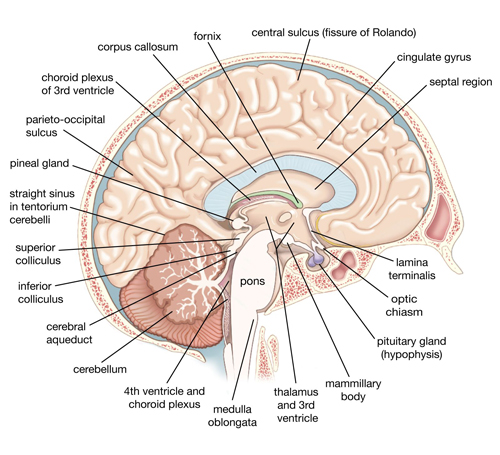
Deep within the brain lies a tiny yet powerful structure – the hypophysis, also known as the pituitary gland. This pea-sized wonder serves as the body’s “control center,” regulating various hormones and influencing numerous functions.
- Hormone Headquarters: The hypophysis releases several crucial hormones, including:
- Growth hormone: Regulates growth and development.
- Thyroid-stimulating hormone: Stimulates the thyroid gland to produce thyroid hormones, governing metabolism.
- Oxytocin: Promotes bonding and attachment.
- Antidiuretic hormone: Regulates water balance in the body.
- Master Conductor: The hypophysis interacts with other glands and the nervous system to maintain hormonal balance. It receives signals from the hypothalamus, another area of the brain, and relays them by releasing specific hormones based on the body’s needs.
- Hidden Hero: Despite its small size, the hypophysis plays a vital role in numerous bodily functions. Its dysfunction can lead to various health problems, highlighting its importance in regulating our internal environment.
Hyoid Bone
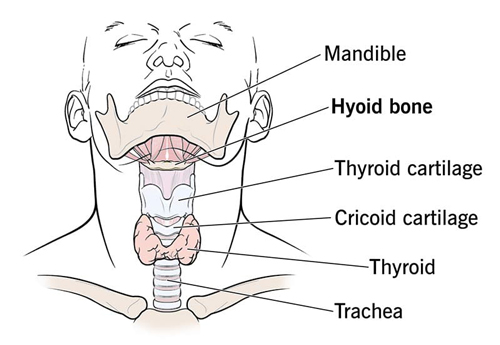
The hyoid bone is a horseshoe-shaped bone located in the anterior midline of the neck between the chin and the thyroid cartilage. It is unique as it’s the only bone in the human body that does not directly articulate with any other bone. The hyoid serves as an anchor point for muscles associated with swallowing and speech.
Hard Palate
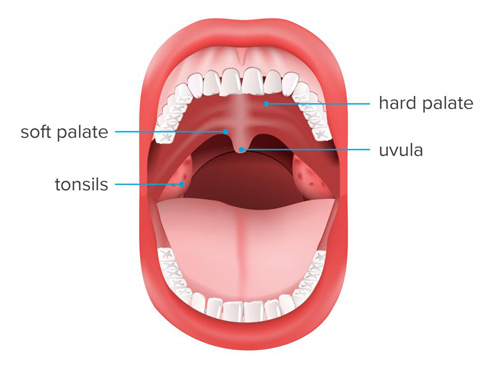
The hard palate is the anterior, bony part of the palate located in the roof of the mouth. It separates the oral and nasal cavities, playing a crucial role in eating and speech. The hard palate aids in mastication by providing a surface against which the tongue can push food for chewing.
List of Human Body Parts Starting with H
| Hamstring Muscles | Hamulus | Hand |
| Hand Muscles | Hard Palate | Head |
| Heart | Heart Valves | Heel |
| Hepatic Veins | Hindfoot | Hip Abductor Muscles |
| Hip Adductor Muscles | Hip Flexor Muscles | Hip Joint |
| Hip Joint Ligaments | Hip Muscles | Human Skeleton |
| Humerus | Hyoglossus Muscle | Hypoglossal Canal |
| Hypoglossal Nerve | Hypophysis | Hair |
| Hyoid Bone | Hip | Hypothalamus |
Conclusion
Our journey through body parts starting with “H” takes us from the heart’s ceaseless rhythm to the dexterity of the human hand, the supportive role of the hip, and the regulatory functions of the hypothalamus. Each part, whether a tiny bone like the hyoid or a major organ like the heart, is an integral component of the intricate machinery that is the human body. As we continue our exploration of the human body and its fascinating anatomy, we deepen our appreciation for the complexity and efficiency with which it operates.
Human Body Parts That Start With
A | B | C | D | E | F | G | H | I | J | K | L | M | N | O | P | Q | R | S | T | U | V | W
